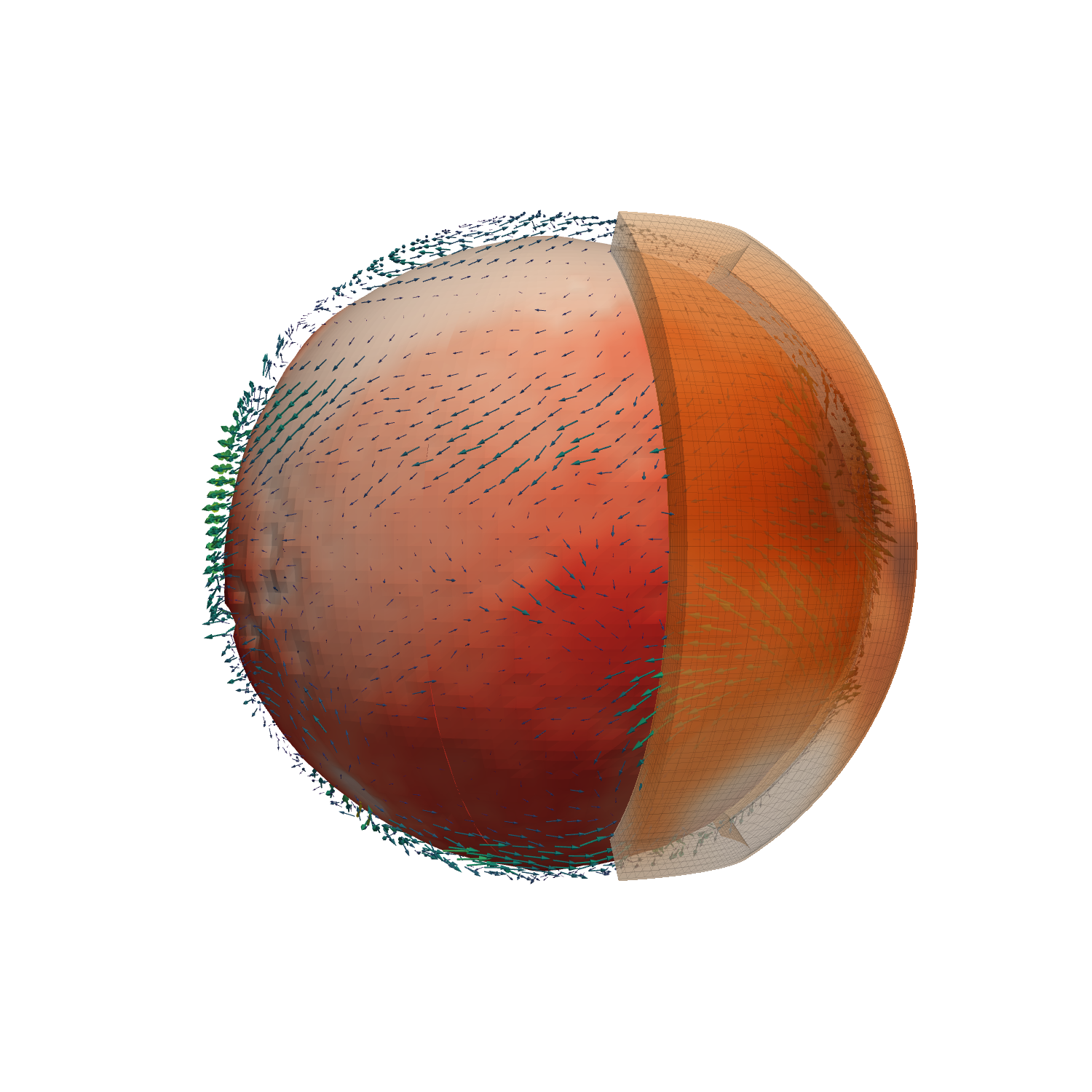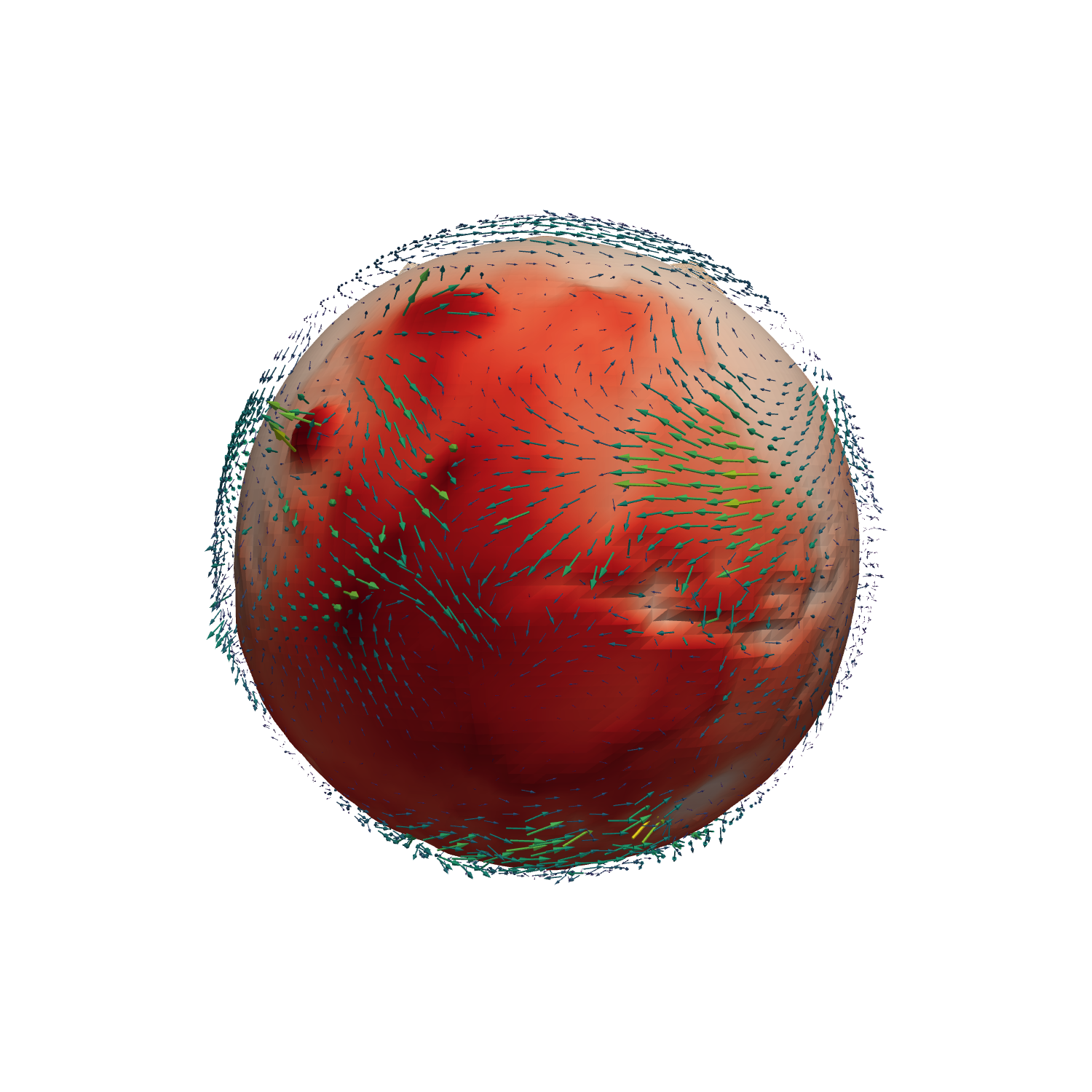Modelling an idealised Martian climate with the Unified Model: The next “giant leap” for Mars GCMs.
- 1University of Exeter, College of Engineering, Mathematics & Physical Sciences, Physics, United Kingdom of Great Britain – England, Scotland, Wales (dm575@exeter.ac.uk)
- 2University of Exeter, College of Engineering, Mathematics & Physical Sciences, Physics, United Kingdom of Great Britain – England, Scotland, Wales (n.j.mayne@exeter.ac.uk)
- 3University of Exeter, College of Engineering, Mathematics & Physical Sciences, Physics, United Kingdom of Great Britain – England, Scotland, Wales (m.r.bate@exeter.ac.uk)
- 4University of Exeter, College of Engineering, Mathematics & Physical Sciences, Physics, United Kingdom of Great Britain – England, Scotland, Wales (d.sergeev@exeter.ac.uk)
Plain language summary
The Modelling of the Martian climate has drastically improved over the last two decades. There are currently several highly sophisticated Mars models being used for research, these have already greatly improved our understanding of Mars’ climate. Here I detail the adaptation of the Met Office Unified Model (UM) to the study of the Martian climate and present the first results. The UM has been adapted to model a wide range of planets, from hot gas giant exoplanets to the Archean Earth, and includes sophisticated treatments of the key physical processes such as dynamics, radiative transfer and dust transport.
Abstract
Mars atmospheric modelling has come far in the past two decades, with increased missions expanding our observational capabilities drastically. These observations are allowing us to develop increasingly accurate Martian Global Climate Models (hereafter; GCMs) (Forget et al., 1999; Read, Lewis and Mulholland, 2015; Martínez et al., 2017). There are currently several well-established GCMs that already model Mars’ atmosphere, including (but not limited to) the LMDs Mars GCM, NASAs AMES Mars model and OpenMARS.
Here we describe the usage and first climate results from our adaptation of the Met Offices Unified Model (hereafter; UM), one of the most sophisticated Earth GCMs already used for modelling exoplanets, for a Martian climate. By adapting established climate schemes used for the study of Earth within the GCM (e.g. atmospheric dust, wind, atmospheric composition, etc.) to Mars’ characteristics, we can create a highly sophisticated Mars model (e.g. high spatial resolution, dynamic dust scheme). Our simulations will be verified by comparison with existing Mars GCMs. The key parameters incorporated into our GCM will include:
- A dynamic dust scheme which includes saltation
- A relevant surface roughness, derived from (Hébrard et al., 2012)
- Martian Orography smoothed extremes (max/min height of 8.2/-8.2km)
- Martian average surface pressure (610 Pa)
- Martian atmospheric composition (simplified to 95% CO2 and 5% N2, omitting Ar)
- An idealised CO2 ice scheme with dynamic pressure shifts caused by freezing/sublimation
- Martian moisture quantities
In this presentation I will detail the different schemes incorporated into the UM key to simulating a Mars climate, then describe the processes used to implement them into the UM. We will then showcase the different scenarios of Mars’ climate we have introduced and their subsequent effects on other climate parameters (e.g. increased pressure and how it changes temperature). I will finish by showing the verification process we used and comparisons to other existing models.
Future of the project:
A verified Mars-UM will then be used to investigate the relationship that key climate variables have to each other. By forcing exaggerated changes in targeted key parameters (e.g. doubling average surface pressure or increasing atmospheric moisture content), we can then investigate the secondary effects these changes have on other parameters in the Martian climate (e.g. change in temperature or dust mixing ratios). This study will help discern the importance and relative influence of Mars’ key parameters, this will in-turn provide insight for future areas of research and development.
This study is part of a Masters-by-research project.
Figure 1: Schematic demonstration of model output (orography is denoted in red, arrows indicate wind direction and speed at 1000m above the relative surface height, dust slab shows rough dust approximations for an extracted segment). Image made using Python, Pyvista and Matplotlib.


Acknowledgements:
This study has required a variety of skillsets due to the many schemes involved, to this the authors would like to thank James Manners and the Met Office team for their assistance. We would also like to thank Ehouarn Millour from the LMD for the assistance with providing technical assistance when using their Mars climate Database. Lastly, we would like to thank the Exeter Exoplanet Theory Group (EETG, exoclimatology.com) & Patrick McGuire (University of Reading) for their technical assistance, acting as a springboard for ideas and for their input and encouragement throughout the project.
References:
Forget, F. et al. (1999) ‘Improved general circulation models of the Martian atmosphere from the surface to above 80 km’, Journal of Geophysical Research E: Planets, 104(E10), pp. 24155–24175. doi: 10.1029/1999JE001025.
Hébrard, E. et al. (2012) ‘An aerodynamic roughness length map derived from extended Martian rock abundance data’, Journal of Geophysical Research E: Planets, 117(4), p. 4008. doi: 10.1029/2011JE003942.
Martínez, G. M. et al. (2017) ‘The Modern Near-Surface Martian Climate: A Review of In-situ Meteorological Data from Viking to Curiosity’, Space Science Reviews, 212(1–2), pp. 295–338. doi: 10.1007/s11214-017-0360-x.
Read, P. L., Lewis, S. R. and Mulholland, D. P. (2015) ‘The physics of Martian weather and climate: A review’, Reports on Progress in Physics, 78(12). doi: 10.1088/0034-4885/78/12/125901.
How to cite: McCulloch, D., Mayne, N., Bate, M., and Sergeev, D.: Modelling an idealised Martian climate with the Unified Model: The next “giant leap” for Mars GCMs., Europlanet Science Congress 2021, online, 13–24 Sep 2021, EPSC2021-232, https://doi.org/10.5194/epsc2021-232, 2021.

